#questions with colleagues
This past month, the Archives division at the JFK Library welcomed six volunteer library science graduate students as part of Preservation Week. We sat down with Archivist & Oral History Coordinator Jennifer Marciello to talk about their work and what they discovered.
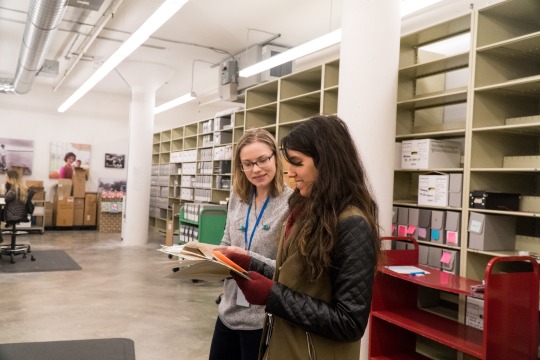
How did Preservation Week come about?
In the Archives Division here at the Library, we have a Preservation Subcommittee whose focus is to identify and document any preservation concerns in our historic collections and come up with plans to address them. In doing this, we noticed that there were some very sizable collections with issues that needed to be addressed, but were too large for any one staff member to take on.
This is where the idea for Preservation Week came from. Instead of one staff member devoting weeks, months or, in some cases, years to one project, we devised a program that would get archival staff and interns involved in working on a specified project for one week out of each semester – three times a year – with the goal of completing the preservation tasks. This program has a dual benefit of allowing interns the opportunity to work and collaborate on a larger shared project, while at the same time completing necessary preservation tasks that do not normally fit into current workflows.
This time, along with some of our archival staff and paid interns, we had the help of Alternative Spring Break volunteers, which is a program that NARA (National Archives and Record Administration) coordinates to provide students with an opportunity to work at a NARA facility. This year, our volunteers were from the Library and Information Science Graduate Programs at Simmons College in Boston, and at Wayne State University in Detroit.
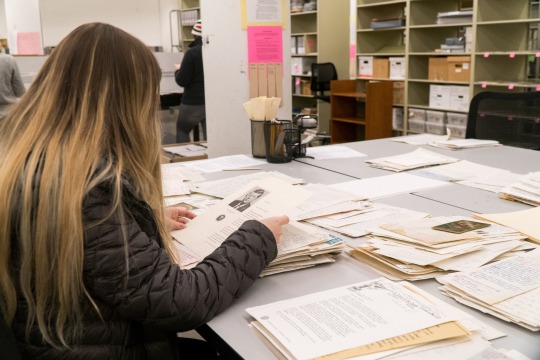
What was the collection you worked on for this Preservation Week?
For this Preservation Week, we worked on the John F. Kennedy Condolence Mail Collection. This is the mail received by the White House and Mrs. Kennedy after President Kennedy’s assassination, and reflects the world-wide reaction to the death of President Kennedy. Previously, it had been minimally processed, which meant that many boxes were still inaccessible to researchers, and there were some significant preservation issues that needed to be addressed.
How large is the collection?
When we started, the collection was roughly 200 cubic feet. This past Preservation Week, we were able to reorganize 120 boxes of mail (60 cubic feet) – specifically the letters D through P. Since we began the program as a whole, we’ve reorganized and made accessible over 160 boxes (80 cubic feet of material) – the letters A through P. We have about two more rounds of Preservation Week to finish out the alphabet. By the Fall, we’re hoping to have all of the domestic letters in the collection – letters sent from the US – sorted, alphabetized, preserved and accessible to researchers.
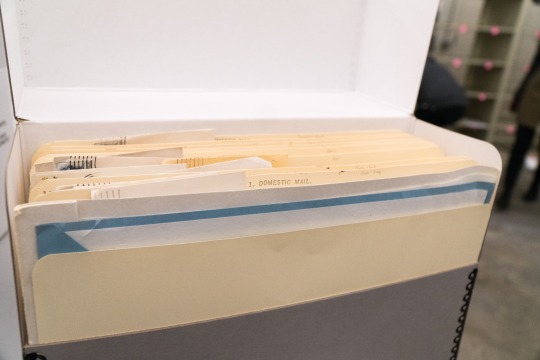
When you were sorting the letters, did you come across anything surprising or especially notable?
I think the takeaway from the project for many of the volunteers who worked with it was the overall outpouring of grief as well as the personal nature of many of the letters, people relating personal stories, offering prayers, aid or asking for help. The majority of the writers discussed their love of the President, and the sadness and grief that they as American citizens felt. Many of the volunteers who worked on this project mentioned that they wouldn’t think of writing to the President or First Lady in this capacity, or feel as personally connected to a politician or political family in this day and age.
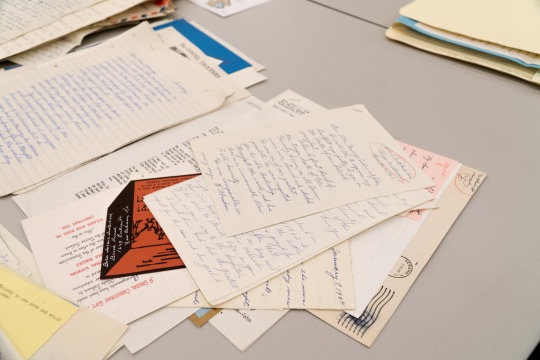
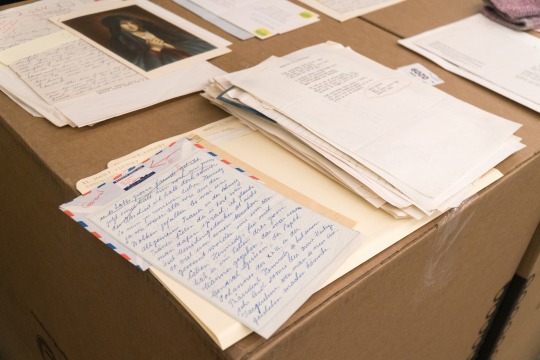
What’s the importance of processing this collection?
Over the years, we’ve found that most of the requests we get to access this collection are from individuals looking for the letters that either they sent or that their family members sent to Mrs. Kennedy. The collection was originally sorted by type – for example, letters with Mass cards, or poems, or drawings, or written by children. We found that with the reference requests we were getting, most people remembered they wrote a letter, but they didn’t remember specifically if they sent a mass card, or wrote a poem, etc. So by reorganizing the collection alphabetically by last name of the individual, Library staff can easily search through a few boxes instead of 200 cubic feet of material. It’s a huge accomplishment and will be of immense help in helping the public find their letters!
